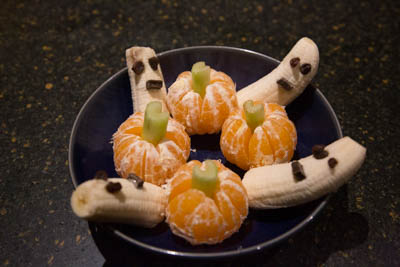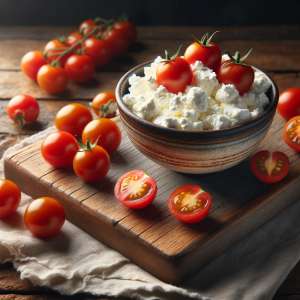A question clients often ask me is: What constitutes a healthy snack? The answer varies widely. I’ve shared the concept of “nudging the notch” where we try to make “one step better” choices. I’ve also written about identifying your protein needs which can be a starting point in choosing snacks. Below, I share additional tips on how to make healthy snack choices.

Identify Your Traffic Light List
The first step to identifying a healthy snack is knowing how foods affect you. In December of 2022, I shared a post about identifying your traffic light foods to help you choose foods that make you feel and perform your best.
To review, green-light foods are your unique “safe” foods that cause no gastrointestinal problems and do not make you overindulge. Yellow light foods are those you might have occasionally, in small amounts. Red-light items are those that you find impossible to eat in moderation or foods that make you sick or cause you problems.

My current red-light list includes foods with gluten, sugar, MSG, artificial sweeteners, vegetable oils, corn, and soy. I won’t die from any of them but they will leave me congested or feeling sick to my stomach.
I’ve had issues in the past with fructose (fruit sugar) and tomatoes, but at the moment, they are okay. I also have a strong gag reflex around consuming liver. Eggplant is a big no-no; something about the texture. Everyone’s list is different. Think of it like a fingerprint. If you’d like to develop a personalized traffic light list, use this template from Precision Nutrition.
Avoid Processed, Manufactured Snacks
Once you have an idea of what your red-light and green-light foods are, consider those yellow-light, situationally-okay foods. Clients often struggle with moderation around sweet, salty, or savory treats. Such foods are manufactured to make people crave them. The result? More sales for the manufacturers. More pounds for us. What is a better solution?
One idea is to make sure you’re buying the smallest size possible for any yellow-light foods. If you supersize everything, you or someone you love is going to end up eating it. A pint of ice cream won’t do the same damage as a gallon. Single-serving Doritos pouches, the kind your kids might take in a school lunch, help you identify what a “single serving” looks like: seven chips, not seventy.

Another idea is to choose single-food snacks such as apple slices with peanut butter, carrot sticks with hummus, or even a can of tuna. Become a label reader. If there is any ingredient listed on the label that you can’t pronounce, put it back on the shelf. What does a partially hydrogenated vegetable oil look like, anyway? What does it to do you? If you don’t know, you might not want to eat it.
Third, whenever you make something at home, you have complete control over the ingredients. I can no longer eat most processed tortillas (corn and gluten are on my avoidance list), but I adore homemade rice flour tortillas made from avocado oil, organic rice flour, water, and sea salt (pictured above).
Protein-Rich Healthy Snack Ideas
A final consideration is to look for ways to add protein to your meals and snacks. A palm-sized serving of protein forms the basis for most meals, according to Precision Nutrition guidelines. My favorite solution is to make more of any dish containing protein (chicken wings, ground turkey, lasagna, shrimp kebabs, burgers, you name it) so that I have protein ready for multiple meals. Who says pulled pork can’t be a breakfast item?
How else might you include protein in more of your snacks? Below are some recipe possibilities you can adjust according to your unique preferences. Experiment to see what works best for you. And share in the comments below if you have a favorite not listed here.

Super-quick Morning Ideas
If you’re pressed for time in the morning (and who isn’t?) you might want to experiment with one of the recipes below.
Greek Yogurt with Topping:
- Plain Greek yogurt (rich in protein, low in sugar).
- Add a handful of almonds or walnuts (healthy fats and protein).
- Add a quarter cup of frozen or fresh berries (anti-oxidants).
- Optional: a sprinkle of cinnamon for flavor.
Dip Sticks:
- Cut up celery, bell pepper, or carrot sticks and slather with almond butter (protein and fiber)
- Slice apples or pears to dip into your favorite nut butter.
- The crunchy texture of either complements the creamy butter.
- A great snack for kids: add raisins and call them “ants on a plank.”

Protein Shake with Greens:
- A scoop of your preferred sugar-free protein powder.
- Blend with unsweetened almond milk and a handful of spinach or kale.
- Quick, nutritious, and can be prepared in minutes.
Edamame with Sea Salt:
- Cooked edamame beans (plant-based protein).
- Sprinkle with a pinch of sea salt.
- Can be served warm or cold.
Healthy Snack Lunch Ideas
For those people who traditionally gravitate toward sandwiches, or who stop by fast-food joints to pick up something when they’re ravenous, here are a few light alternatives to explore.
Turkey Roll-Ups:
- Thinly sliced turkey breast (lean protein).
- Wrap around cucumber sticks or bell pepper strips.
- Secure with a toothpick for easy eating.
Cottage Cheese and Cherry Tomatoes:

- A bowl of low-fat cottage cheese (high in protein).
- Halved cherry tomatoes for a juicy crunch.
- A dash of black pepper or herbs for extra flavor.
Boiled Eggs with Spinach:
- Hard-boiled eggs, sliced in half (protein and healthy fats).
- Serve on a bed of fresh spinach leaves (iron and vitamins).
- Light seasoning with salt and pepper.
Heartier Fare
The ideas below might require a little more preparation, but they also involve more flavor. Experiment to see what works best for you.
Tuna Salad on Bell Pepper Slices:
- Mix canned tuna (in water, not oil) with a little mustard and herbs.
- Spoon onto thick slices of bell pepper.
- Quick, crunchy, and full of protein.
Chicken and Avocado Lettuce Wraps:

- Grilled chicken breast, sliced (lean protein).
- Wrap in lettuce leaves with avocado slices (healthy fats).
- Optional: a squeeze of lime for zest.
Smoked Salmon and Cucumber:
- Slices of smoked salmon (omega-3 fatty acids and protein).
- Lay on thick cucumber slices.
- A touch of dill or lemon juice for flavor.
Whatever you choose, by putting a little more thought into your options, you can add flavor, variety, macronutrients, phytonutrients, and enjoyment to any snack or meal. If you have a favorite, please share in the comments so we can all make healthy snack choices.

An anonymous reader shared this lovely comment which I thought would be helpful for other readers:
Homemade Humus
Garbanzo beans
Garlic
Tahini
Olive oil
Salt, pepper
Lemon juice
Funny quirk: there is always a bean that never gets smashed!
At her local farmer’s market, she gets fresh Labneh (strained Greek yogurt), apricot, pumpkin, and mango, some of her favorites. Thanks for the input!